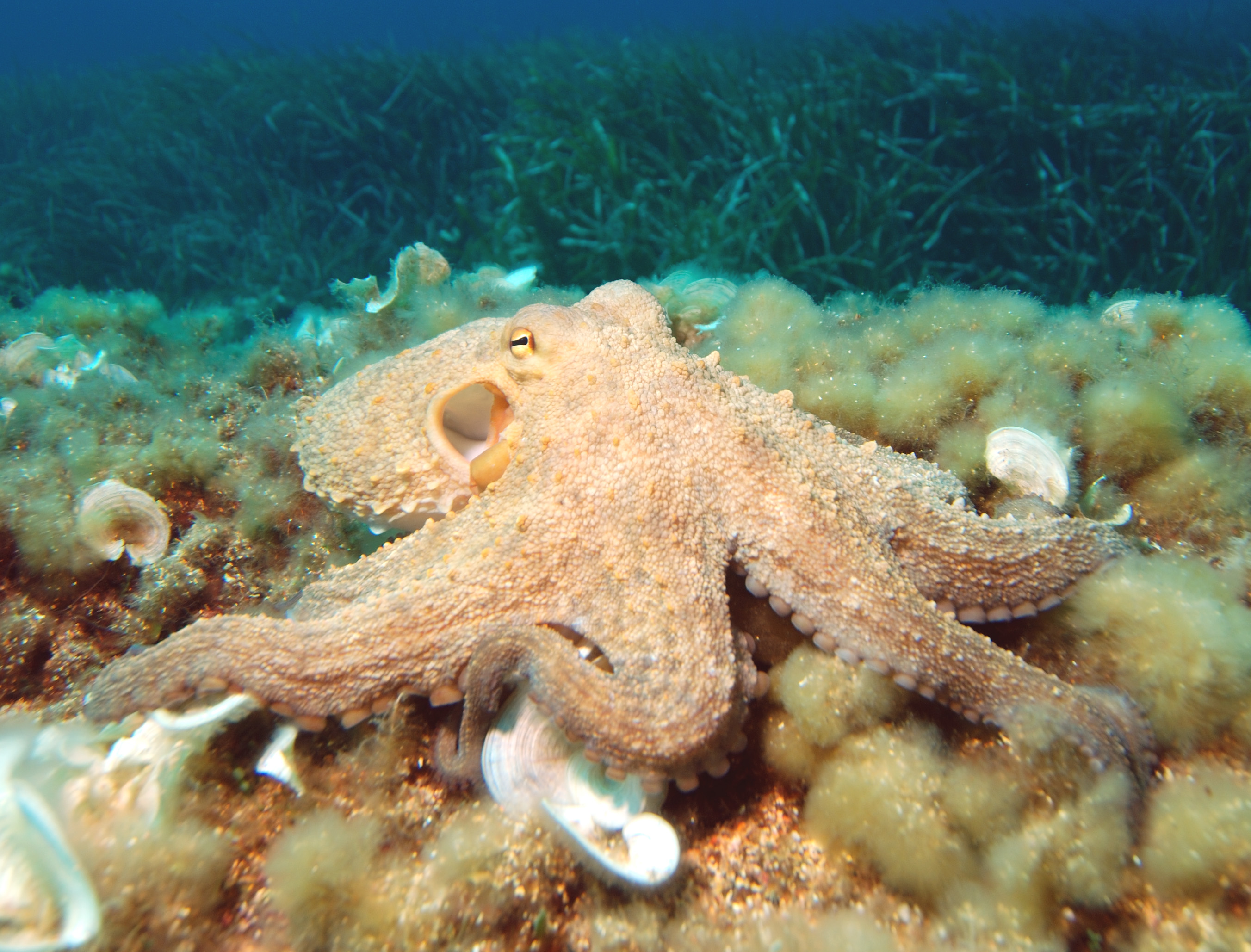Unveiling Nature’s Wonders: Fascinating Facts on Common Animals

Welcome, fellow nature enthusiasts, to a wild ride through the captivating world of common animals! Prepare to be amazed, amused, and maybe even a little astonished as we delve into the quirky and fascinating facts that make these seemingly ordinary creatures anything but. From sneaky squirrels to sly octopuses, get ready to uncover the hidden talents and peculiar behaviors of some of nature’s most underappreciated gems. So grab your binoculars, strap on your hiking boots, and get ready to be wowed by the wonders of the animal kingdom!
Amazing Adaptations of the Common Octopus
Octopuses may seem like simple creatures, but they have some truly amazing adaptations that help them survive and thrive in the big blue ocean. Let’s dive into some of the most incredible ways these cephalopods have adapted to their environment.
First off, did you know that octopuses have not one, not two, but three hearts? That’s right, these slimy sea critters have a trio of hearts pumping their blue blood around their bodies. Talk about being heart-healthy!
Another mind-blowing adaptation of the common octopus is their ability to change color and texture at the drop of a hat. Need to blend into your surroundings? No problem, just camouflage yourself to match the seabed or coral reef. Want to scare off a predator? Turn yourself into a spiky ball of fury. Octopuses truly are the masters of disguise!
And let’s not forget about their eight long tentacles, each equipped with suckers and taste buds. These versatile appendages help octopuses catch prey, navigate their environment, and even open jars. Who needs opposable thumbs when you have suction cups and a keen sense of taste?
The Intriguing Family Dynamics of Elephants
Elephants are well-known for their close-knit family dynamics, which can be both heartwarming and entertaining to observe. Within a herd, there is a complex hierarchy that dictates everything from who gets to lead the group to who gets to eat first at the communal watering hole.
One of the most fascinating aspects of elephant family dynamics is the role of the matriarch. She is the wise old grandma of the group, with decades of experience under her belt. She’s the one who decides where the herd will go next and intervenes in any disputes that may arise among the younger members.
Young calves in the herd have a playful, mischievous streak that can sometimes get them into trouble. They love to push the boundaries and test the patience of their elders, much to the amusement of onlookers. But when danger threatens, the entire family bands together to protect the vulnerable youngsters, showcasing their unwavering loyalty and fierce protective instincts.

Unbelievable Intellectual Abilities of Dolphins
Have you ever heard about the ? These clever creatures are known for their amazing problem-solving skills and social intelligence. Here are some fascinating facts about the intelligence of dolphins:
- Dolphins have a complex communication system that includes a variety of vocalizations and body language. They are able to communicate with each other over long distances using a series of clicks, whistles, and other sounds.
- Studies have shown that dolphins are capable of recognizing themselves in mirrors, which is a sign of self-awareness. This ability is shared by only a few other species, such as humans, great apes, and elephants.
- Dolphins are known to use tools in the wild. For example, they have been seen using sponges to protect their noses while foraging for food on the ocean floor. This is a clear demonstration of their problem-solving abilities and innovation.
So next time you see a dolphin performing acrobatic tricks at an aquarium, remember that these intelligent creatures are capable of much more than meets the eye!

Incredible Migration Patterns of Monarch Butterflies
Have you ever wondered how a tiny creature like a monarch butterfly manages to travel thousands of miles each year? It’s mind-boggling, really. These little guys have some serious wanderlust, and they never fail to impress with their incredible migration patterns.
Picture this: a fleet of monarch butterflies embarking on a journey that takes them from Canada all the way down to Mexico. It’s like they’re going on a never-ending vacation, flying over mountains, rivers, and cities with nothing but their wings to guide them. Talk about impressive frequent flier miles!
And let’s not forget about their pit stops along the way. These butterflies know how to party – stopping to refuel on nectar, mingle with other butterflies, and catch up on the latest gossip. They’re basically the social butterflies of the insect world.
So next time you see a monarch butterfly flitting by, take a moment to appreciate the incredible journey they’re on. Who knows, maybe they’ll inspire you to spread your own wings and embark on an epic adventure of your own. Just remember to pack some extra nectar for the road!
The Surprising Social Structures of Ant Colonies
Ant colonies are known for their intricate and surprisingly complex social structures. From the queen ant at the top of the hierarchy to the worker ants tirelessly foraging for food, each member plays a crucial role in the functioning of the colony.
One of the most interesting aspects of ant colonies is the division of labor among the different types of ants. Worker ants are responsible for tasks such as building tunnels, caring for the young, and protecting the colony. Soldier ants, on the other hand, are tasked with defending the colony from predators and other threats. And let’s not forget about the royal queen ant who rules over the entire colony with an iron fist (or should I say six iron legs?).
But it’s not all work and no play in an ant colony. In fact, ants are known for their intricate communication system which allows them to coordinate their efforts and stay connected with one another. Through a combination of pheromones, vibrations, and even dancing, ants are able to relay important information to their fellow colony members.
So the next time you see a line of ants marching in perfect unison, take a moment to appreciate the fascinating social structures at play. Who knew that these tiny insects could teach us so much about teamwork, communication, and the importance of knowing your place in society?
The Mind-Blowing Camouflage Techniques of Chameleons
Chameleons are known for their incredible camouflage abilities that can make even the most skilled spy jealous. Their color-changing skin is not just for show, it’s a survival tactic that helps them blend in seamlessly with their surroundings. Here are some mind-blowing techniques these masters of disguise use:
- Changing colors: Chameleons can change their skin color to match their environment in a matter of seconds. Whether they are hanging out in the lush green jungle or on a rocky cliff, they can blend in effortlessly.
- Texture transformation: Not only do chameleons change colors, but they can also alter their skin texture to mimic the patterns of leaves, bark, or other surfaces. This helps them become virtually invisible to predators.
- Shifting shapes: Chameleons have the remarkable ability to flatten or puff up their bodies to better match the shape of the objects they are trying to camouflage against. This makes them even harder to spot in their natural habitat.
So next time you think you’ve spotted a chameleon, think again – it might just be a cleverly disguised ninja waiting to strike!
FAQs
What animal has the largest brain relative to its body size?
Believe it or not, the animal with the largest brain relative to its body size is the ant! Those little guys may be tiny, but they sure are smart.
How do cats always land on their feet?
Cats have an astonishing ability called the “righting reflex” which allows them to twist their bodies mid-air in order to land on their feet. It’s like they have their own built-in superhero power!
Why do zebras have stripes?
Contrary to popular belief, zebras don’t have stripes just to look fashionable. Those stripes actually serve as a natural form of sunscreen, helping to protect them from the scorching African sun.
Which animal has the shortest lifespan?
The mayfly holds the record for having the shortest lifespan, with some species living for only a few hours. Talk about making the most out of life!
How do whales communicate over long distances?
Whales are known for their hauntingly beautiful songs, which they use to communicate over long distances. It’s like they’re the original underwater rockstars!
Why do flamingos stand on one leg?
Flamingos are the epitome of grace and balance, standing on one leg to conserve energy and regulate their body temperature. Maybe we could all learn a thing or two from these elegant birds!
The Wild World of Common Creatures
And there you have it, folks! Who knew that the animals we see every day could be so full of surprises? From sneaky squirrels to playful otters, nature’s wonders never cease to amaze us. So next time you spot one of these common critters, remember all the fascinating facts you’ve learned today. Keep on exploring the wild world around you, and who knows what other hidden secrets you might uncover! Stay wild and keep on adventuring, my friends!






